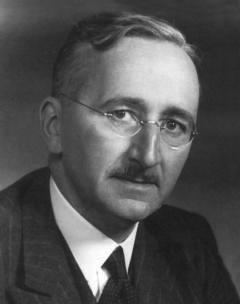 Lisa Herzog in The Raven:
Lisa Herzog in The Raven:
I grew up in the 1990s in a tiny Northern Bavarian town, at the border between what was then West Germany and Czechoslovakia. The hilly landscape with its quiet woodlands and baroque church steeples continued seamlessly on both sides. But on the Czechoslovakian side, all the buildings and the infrastructure appeared old and dilapidated. When my family took its first car trips after the fall of the Iron Curtain, my father would navigate around the potholes of neglected streets while I would sit in the back seat and anxiously stare at the washed-out facades of farmhouses, which the front gardens full of hollyhock and asters hardly managed to hide. The 19th-century villas in the once grandiose spa of Mariánské Lázně—where Goethe had met his last love, the 17-year-old beauty Ulrike von Levetzow—seemed sad shadows of their past glory. I saw hardly any supermarkets or other shop windows with wares; people seemed to buy food in faceless concrete buildings sitting at dimly lit crossroads.
Run-down buildings, with aging plaster peeling off, no loud billboards (though they would come very soon)—it seemed that the communist economic system that was meant to be a workers’ paradise was unable to provide them with paint for their houses. The fall of the Iron Curtain predictably generated a tidal wave of worker migration, with Czechoslovakians seizing opportunities in the capitalist West. In the rural border regions, we met Czechoslovakian music teachers (the spa orchestras from the communist era had been disbanded), construction workers, and nurses, for whom a salary in Deutsche Mark meant a fortune. Supermarkets and hardware stores from Western chains would quickly set up shops across the border. European Union projects to renovate streets and buildings followed.
The visual impressions were clear for those Europeans in the early 1990s who could witness both sides: capitalist countries were colorful, the former communist countries were grey. It was the time when political scientist Francis Fukuyama used the Hegelian phrase “the end of history” to declare that the combination of capitalism and democracy, the “Western” system, was the best of all possible systems. And at the core of this triumph was one institution that continues to fascinate friends and foes alike: the “free market.”
More here.
